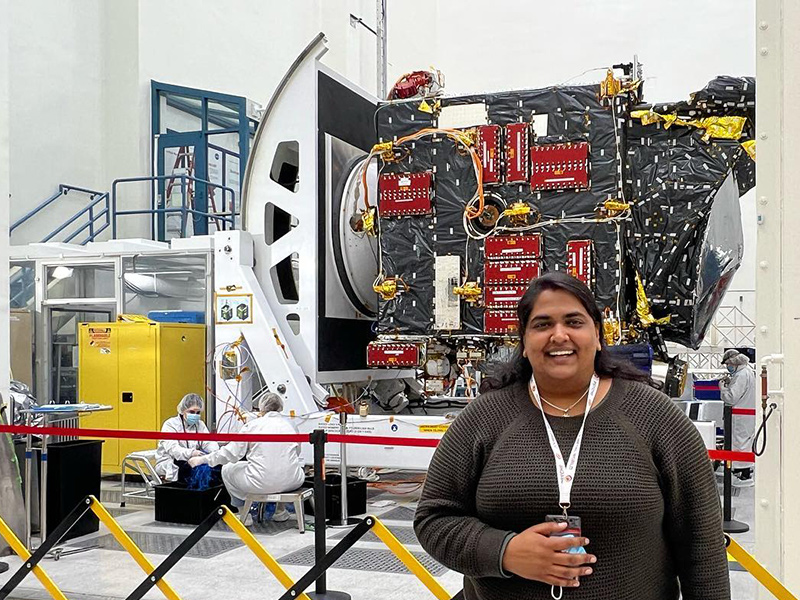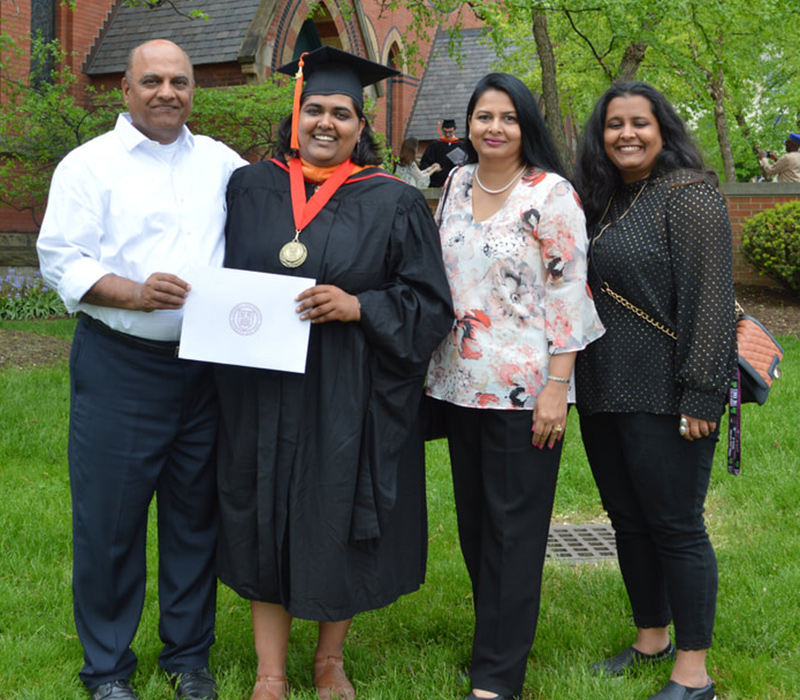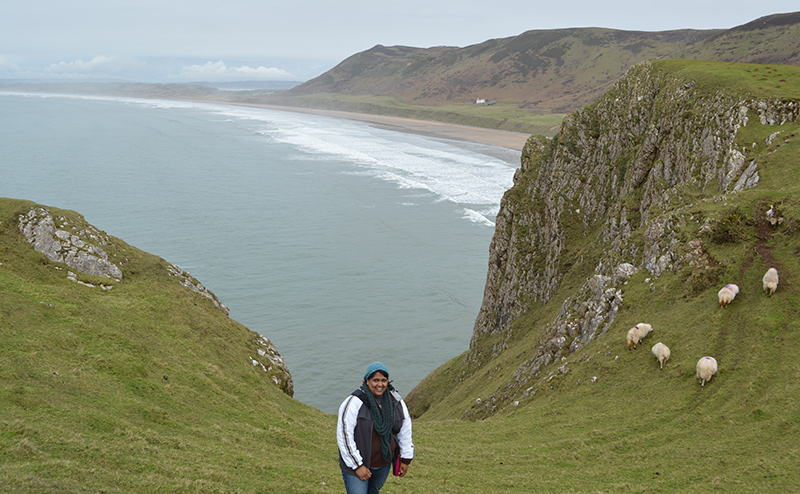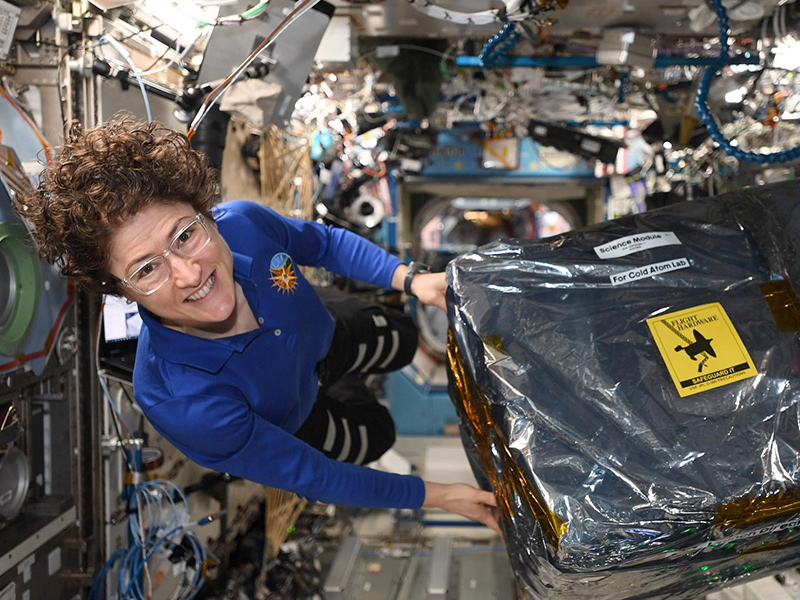
Richa Sirohi
End-to-End Information System Engineer - NASA's Jet Propulsion Laboratory (JPL)
Cornell University
Master of Systems Engineering
Baylor University
Bachelor of Science in Mechanical Engineering (BSME)
Cornell University
Masters in Engineering Management (currently enrolled)
Growing up as the daughter of immigrants living in Nebraska, Richa Sirohi had no idea she could pursue a career in space exploration. But her childhood love of Legos and an eight-grade astronomy project helped lead Richa on a path to becoming an engineer at NASA’s Jet Propulsion Laboratory. Today, she’s working on NASA’s Psyche mission to an asteroid with the same name, and will soon join a new mission to study our home planet.
Growing up in an immigrant family in Nebraska I didn't know a lot about different career paths – let alone believe that I could pursue a career in space exploration. Still, I was ambitious and curious, and I wanted to seek out opportunities and knowledge. I’m grateful for the support of my family when it came to pursuing an education.
I always enjoyed building things with Legos, and I liked seeing how technology worked. However, it wasn't until an eighth-grade astronomy project that I discovered where I wanted to focus my energy. The project was to present information on any planetary body. Instead of choosing just one, I did all of the planets in our solar system and created a hand-illustrated book!
In high school, I had a strong interest in physics, so pursuing engineering was an obvious choice. After hearing from a SpaceX engineer in college, I became hooked. I wanted to share in that same passion and contribute to our understanding of space and science. I sought out classes and internships to help me build a career in aerospace. That spark led me to JPL.

I was involved with the Society of Women Engineers in college, and I was fortunate to meet a JPL engineer at one of the national conferences. After earning an internship, I spent the summer working on the Mars Perseverance rover (Mars 2020), and learning about the amazing work at JPL. I came back full-time after completing my graduate degree.
When mission scientists want to find data to help unlock secrets about Earth or another planetary body, they rely on a complex system of people and technology to properly command a spacecraft, collect and manage the data on the spacecraft, downlink the data, and then process the data. This complex system is called the End-to-End Information System (EEIS) and I am one of the EEIS engineers. Currently, I work on the Psyche mission [to the asteroid with the same name], but soon I will be supporting the NASA-ISRO SAR (NISAR) mission [to measure Earth’s hazards and its changing ecosystems].
My role is to ensure the design of the system meets our requirements, that the interfaces are compatible, and that the system functions the way we expect and is communicated across the various teams on the project. We also test to make sure the requirements and system functions can be validated. I help make sure the mission operators are able to effectively and conveniently operate the spacecraft to achieve our science goals. For me, it's really exciting because I get a high-level view of how data moves through the system, and I get to work with lots of people to enable science.
Communication is key. Learn to compose your thoughts and articulate them to your audience, both when you are speaking and when you’re writing. While considered soft skills, your ability to communicate will define your success both personally and professionally. Being able to write well allows you to share technical knowledge, build your vocabulary, write essays and academic papers, and write professional emails and documentation. Speaking well is crucial whether you want to interview for a job or school, speak publicly to share your work and gain credibility, ask for help, advocate for promotions and raises, argue effectively to stand by your values, or describe complex, technical systems. Practicing and building these skills early in life will enable you to stand out and also navigate difficult conversations and become more confident.
Stay curious. In aerospace, new technology is constantly being introduced, and there are new missions at the forefront of what we thought was possible. Staying curious will keep you excited about tackling new and challenging problems. It will also enable you to adapt to new roles and career paths as opportunities present themselves.
Education is also very important. Commit yourself to a lifelong journey of learning by taking on new tasks, asking questions, and by showing a thirst for knowledge. This makes all the difference when pursuing a successful and fulfilling career in any field.
While I feel confident in my capabilities, confidence is a skill that takes practice and effort. I have had to work hard to overcome self-doubt and imposter syndrome [intellectual self-doubt]. It is easy, especially when surrounded by such incredible people, to doubt how much I know and can do. What helped me is surrounding myself with peers and mentors who support me and celebrate my accomplishments. This support system reminds me of my passions, my contributions, and my unique skills. It also challenges me to push the boundaries of what I think I can accomplish.

I am incredibly lucky! I win tickets to concerts all the time. I even won a trip to Maui on a game show! Besides attending concerts at the Walt Disney Concert Hall and the Hollywood Bowl (my favorite venue), I love exploring nature, playing racquetball and tennis, playing my viola or ukulele, cooking food from around the world, doing STEM outreach to inspire young women, playing board games, and traveling.
One of my favorite adventures was exploring the Worm's Head cliffs in Rhossili in Swansea, Wales.
My favorite space image is this picture of the Cold Atom Lab’s Science Module 3 being unloaded on the International Space Station in December 2019 by astronaut Christina Koch. It’s special to me because Science Module 3 was one of the first projects I worked on when I joined JPL full-time in 2019. While the Cold Atom Lab has been on the ISS since May of 2018, this science module replacement is an important part of the physics experiment and it was the first thing I worked on that went to space.

